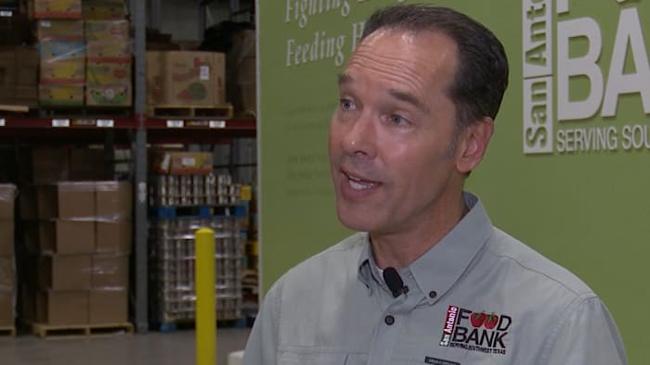Summary
The CEO of the San Antonio Food Bank is raising concerns about potential cuts to the Supplemental Nutrition and Assistance Program, known as SNAP.
Source: KSAT

AI News Q&A (Free Content)
Q1: What is the Supplemental Nutrition Assistance Program (SNAP) and how does it support nutrition for low-income individuals in the United States?
A1: The Supplemental Nutrition Assistance Program (SNAP), formerly known as food stamps, is a federal aid initiative managed by the U.S. Department of Agriculture’s Food and Nutrition Service. SNAP provides monthly benefits to low- and no-income individuals and families to help them afford adequate nutrition. Benefits are delivered via electronic benefit transfer (EBT) cards, which can be used at authorized retailers. In 2018, SNAP supported about 40 million Americans, reflecting its central role in the U.S. safety net for nutrition and food security.
Q2: How could federal cuts to SNAP impact the San Antonio Food Bank’s ability to serve the community?
A2: Federal cuts to SNAP would likely increase demand at local food banks, including the San Antonio Food Bank. As SNAP is the nation’s largest nutrition program, reductions in benefits can leave more households food insecure, prompting them to seek assistance from food banks. This increased demand can strain resources at local food banks, making it difficult to meet community needs, especially during periods of high unemployment or economic downturn.
Q3: What have been the trends in SNAP enrollment and expenditure in the past decade, and how might this inform the impact of funding cuts?
A3: SNAP enrollment and expenses increased sharply during the Great Recession, peaking in 2013 before declining as the economy recovered. In 2018, the program cost $57.1 billion. These trends show SNAP’s responsiveness to economic conditions—when unemployment rises, more people need assistance. Funding cuts during economic hardship could therefore have outsized negative impacts, increasing food insecurity rates and overwhelming local aid organizations.
Q4: According to recent research, how can artificial intelligence (AI) improve nutrition outcomes for SNAP beneficiaries and food bank clients?
A4: A 2023 study highlights that AI-driven recommender systems can assist in providing tailored nutrition guidance to individuals, including SNAP beneficiaries and food bank clients. By analyzing dietary data and health profiles, AI can offer personalized recommendations that help clients make healthier food choices within their budget constraints. This technology holds promise for improving overall nutrition outcomes and efficiency in food assistance programs.
Q5: How accurate are current methods for estimating the nutritional value of foods provided through programs like SNAP and food banks?
A5: A 2020 study proposed a scalable method for nutritional profile estimation using ingredient data and the USDA Standard Reference Database. Such reliable nutrient profiling is essential for both program management and ensuring the health of recipients.
Q6: What role does the Food and Nutrition Service (FNS) play in supporting nutrition programs like SNAP at the national and local levels?
A6: The Food and Nutrition Service (FNS), a division of the USDA, is responsible for administering SNAP and other nutrition assistance programs. FNS sets guidelines, allocates federal funding, and oversees program implementation across states. By coordinating with local agencies and organizations, FNS ensures consistent program delivery and helps address hunger and nutrition needs nationwide.
Q7: What are the potential long-term effects on community nutrition if SNAP benefits are reduced, particularly in regions with high food insecurity like San Antonio?
A7: Reducing SNAP benefits can lead to increased food insecurity, poorer diet quality, and greater reliance on emergency food systems like food banks. In regions with high food insecurity, such as San Antonio, this can exacerbate health disparities, increase the prevalence of nutrition-related diseases, and place additional pressure on local resources. Long-term, these effects can hinder educational and economic opportunities for affected populations and increase healthcare costs.
References:
- Supplemental Nutrition Assistance Program (SNAP) - Wikipedia: https://en.wikipedia.org/wiki/Supplemental_Nutrition_Assistance_Program
- Food and Nutrition Service - Wikipedia: https://en.wikipedia.org/wiki/Food_and_Nutrition_Service




